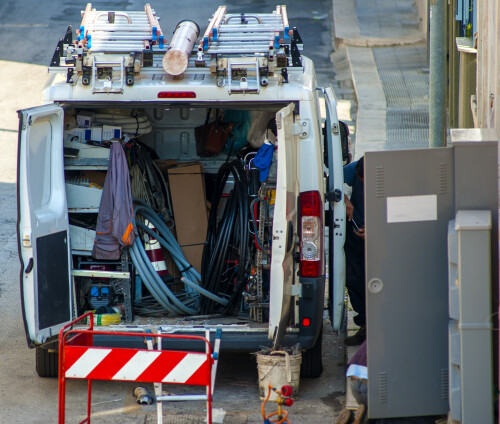
Service vehicles consumed around 2.2 litres of diesel per day in the study - only when the engine was idling.
Service vehicles often have high idling times because the additional consumers are supplied via the drive motor. This costs fuel unnecessarily. Instead of running the engine, or alternatively a generator, the Lithium Power Supply II (LPS II) can be used, saving fuel costs and emissions.
The following results are based on a study conducted on behalf of Clayton Power. The vehicle fleet of a large company was examined with regard to its idling times in daily operation. It was then calculated how the use of LPS II instead of engine idling has a positive effect on fuel costs and CO2 emissions.

Service vehicles consumed around 2.2 litres of diesel per day in the study - only when the engine was idling.
Against the backdrop of increased energy costs and a heightened awareness of more sustainable processes, the company wanted to explore its savings potential. And these turned out to be enormous.
On average, the fleet consumed more than 2 litres of diesel per day and vehicle - only when idling. The standstill times with the engine running arose, for example, from charging batteries for laptops and tools, operating additional heating or lighting elements, and using microwaves or kettles.
Some vehicles in the study were also equipped with a diesel generator on board. But it turned out that the employees actively avoided using it. Too heavy, too loud, too unwieldy and unpleasant exhaust fumes were the arguments. As a result, the LPS II came into focus as a mobile power supply.
The users were impressed. But the figures also spoke volumes at the end of the test phase:
18.37 % less diesel consumption of the fleet in the year
Immediate CO2 reduction of the fleet by 2,246 tonnes of CO2 per year - as a comparison: Equivalent to 17,249 economy flights saved from Munich to Berlin
Rapid cost amortisation depending on the LPS II type selected
In addition, there are of course further advantages to be gained from changing over: Among other things, engine wear is reduced, the low weight increases the payload, the uniform supply of a fleet has synergy effects, the vehicles can be easily converted at the end of the lease and much more.
Of course, the conditions and factors are individual for each fleet. If you are interested in working out your savings potential by electrifying the additional consumers in your vehicle fleet, we will be happy to help.
You can request a non-binding initial consultation now: inquiry@leab.eu